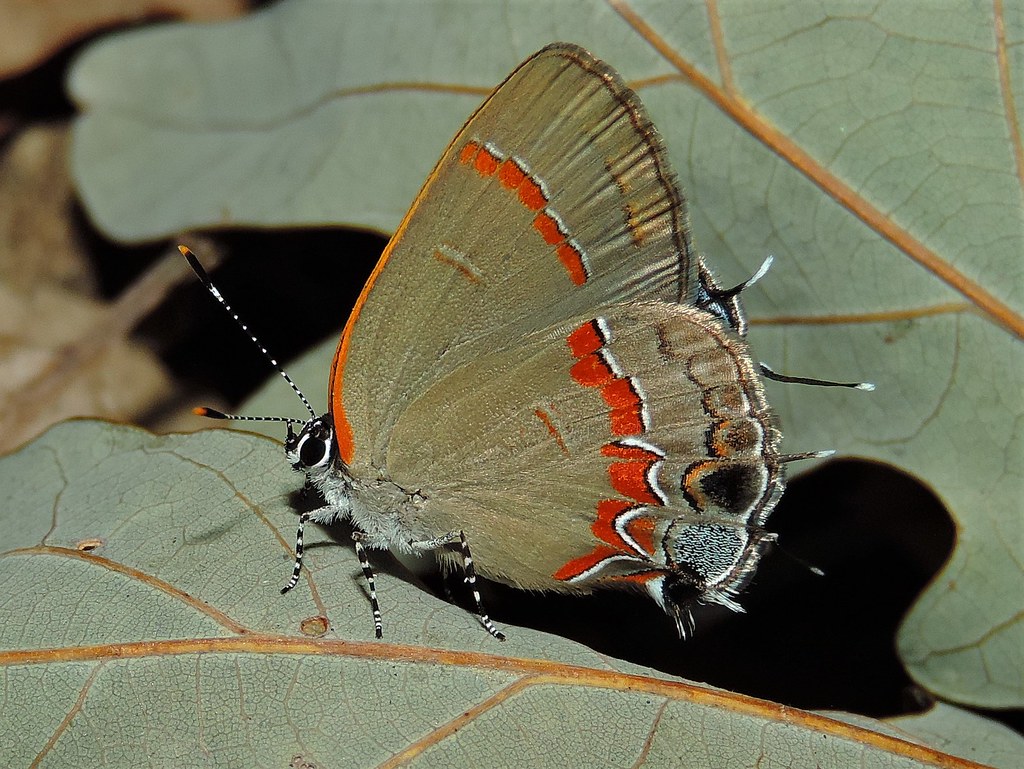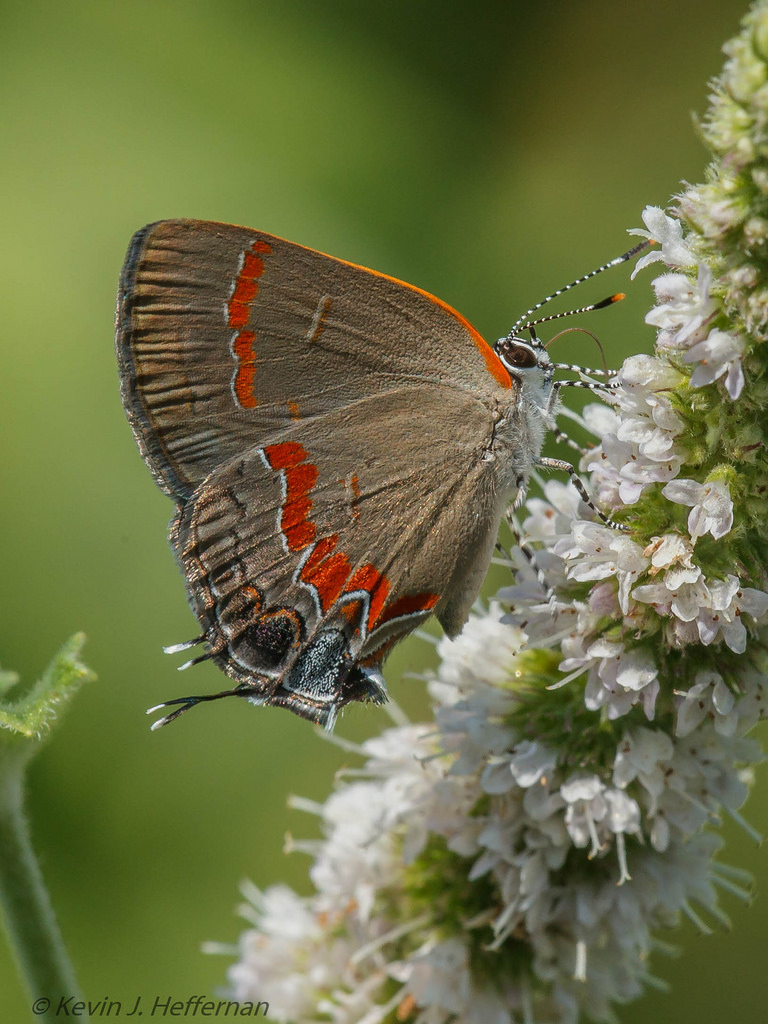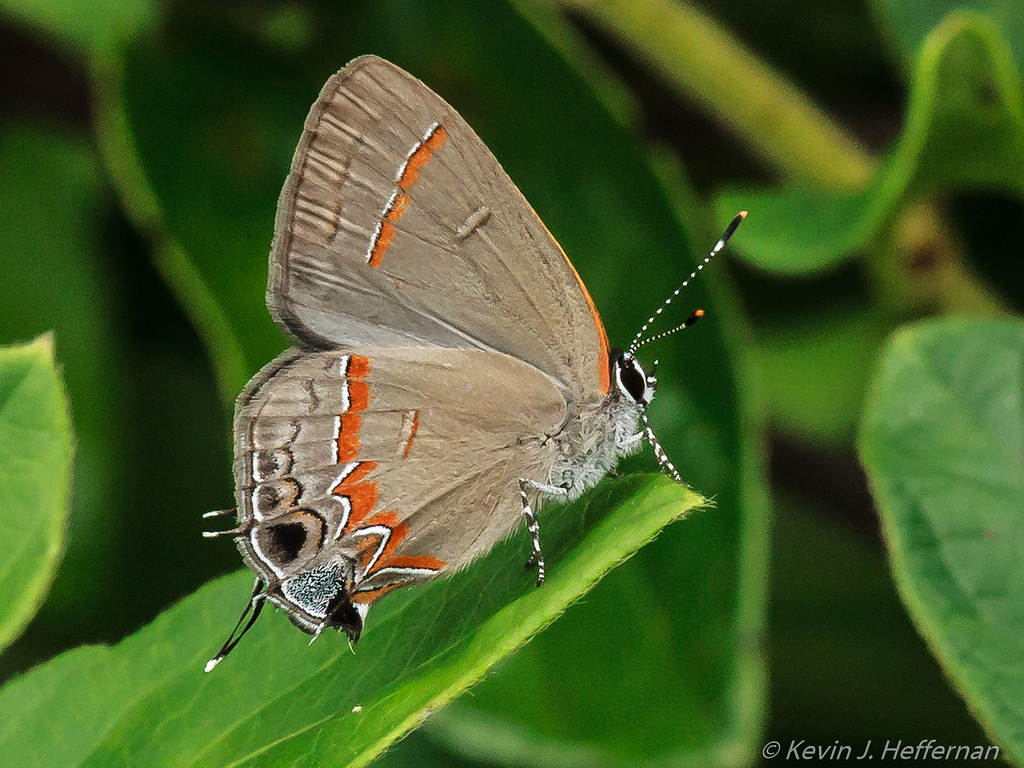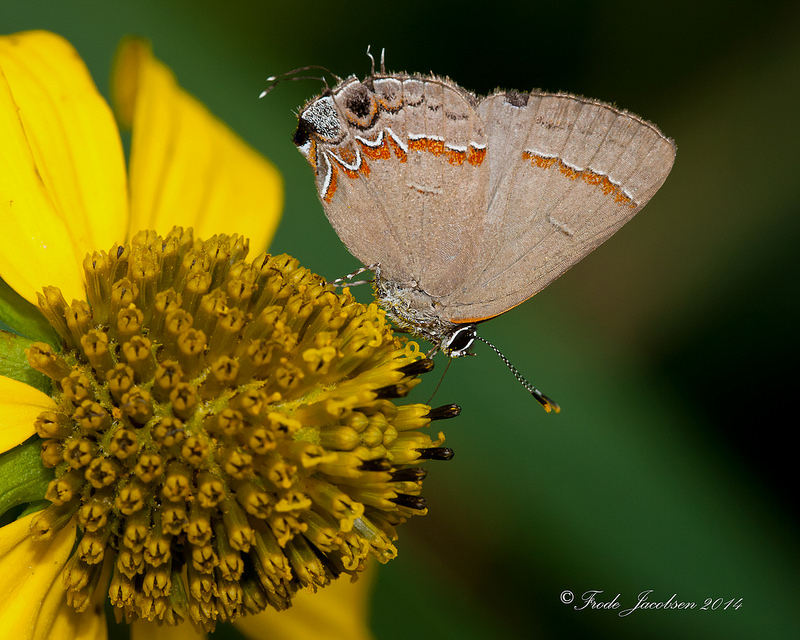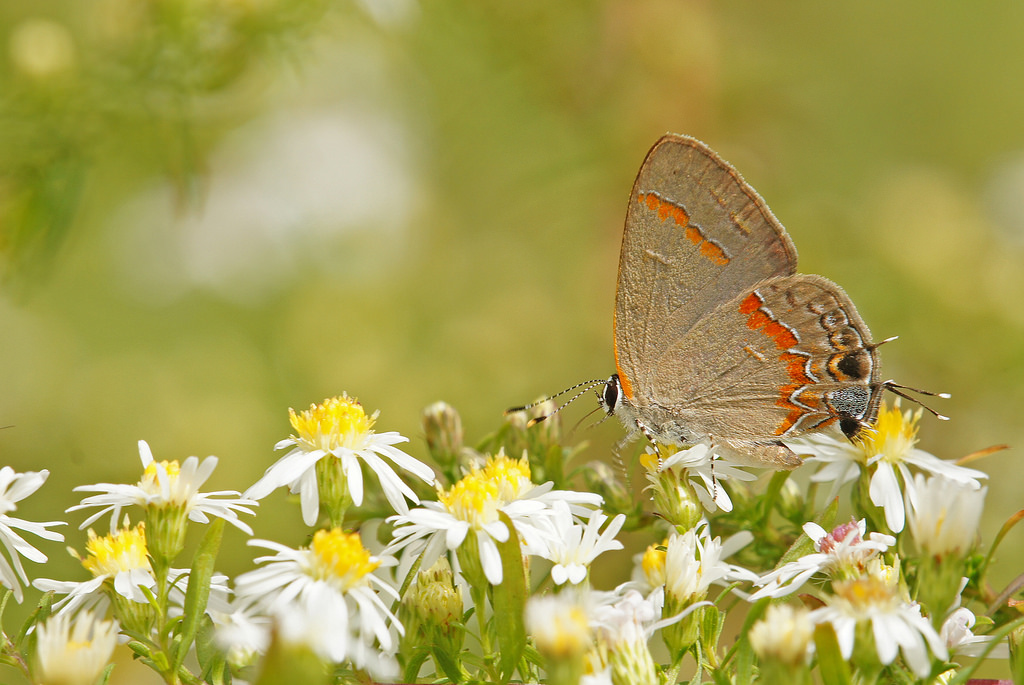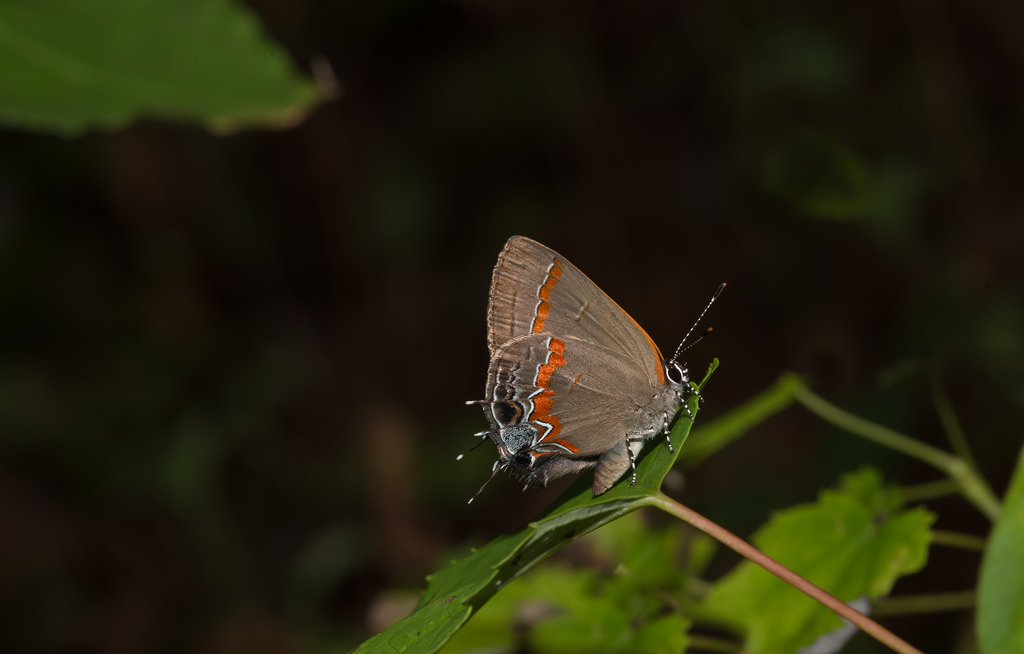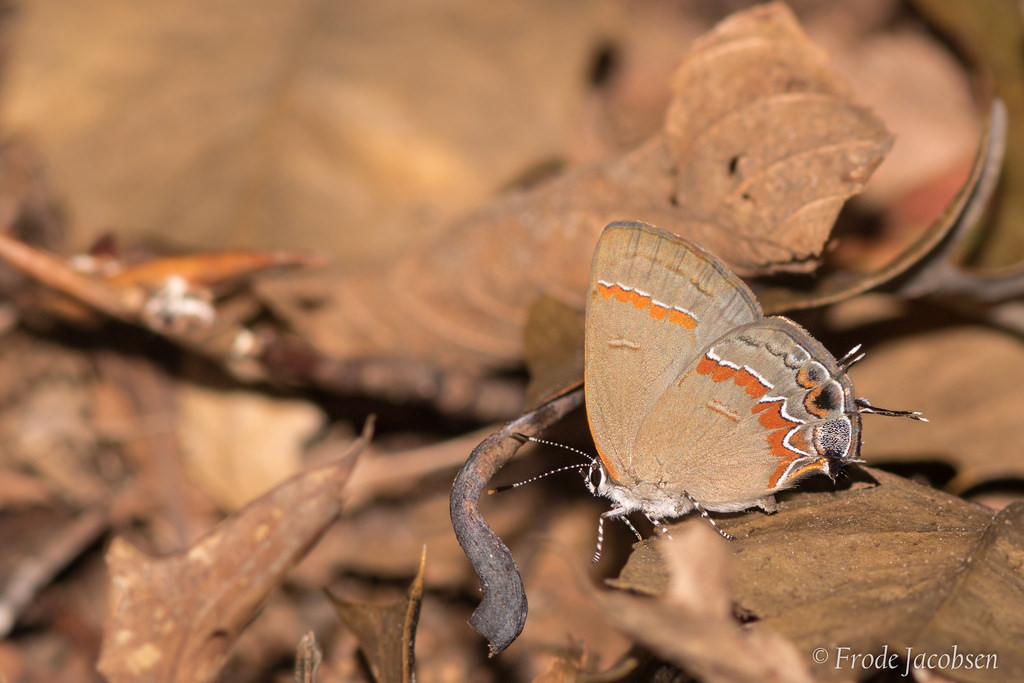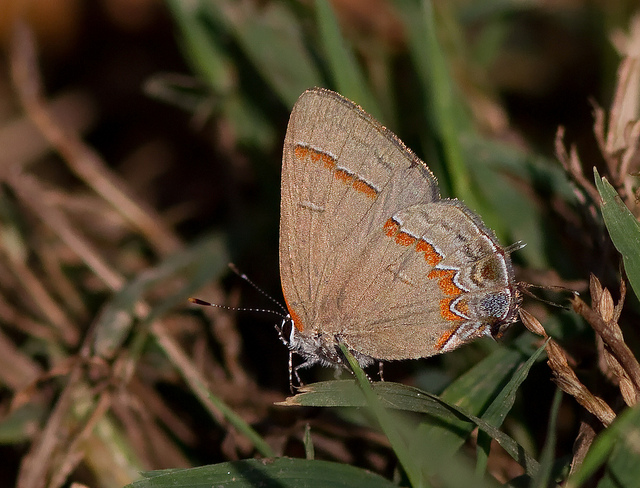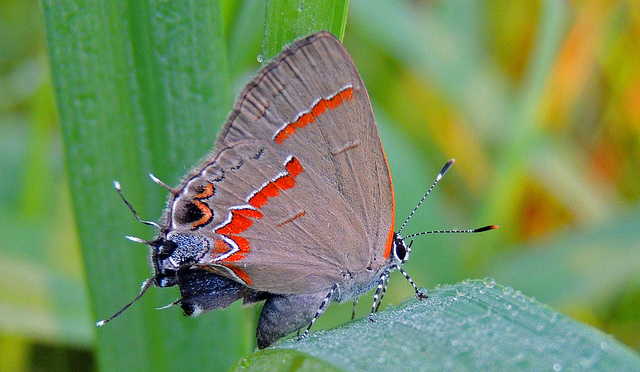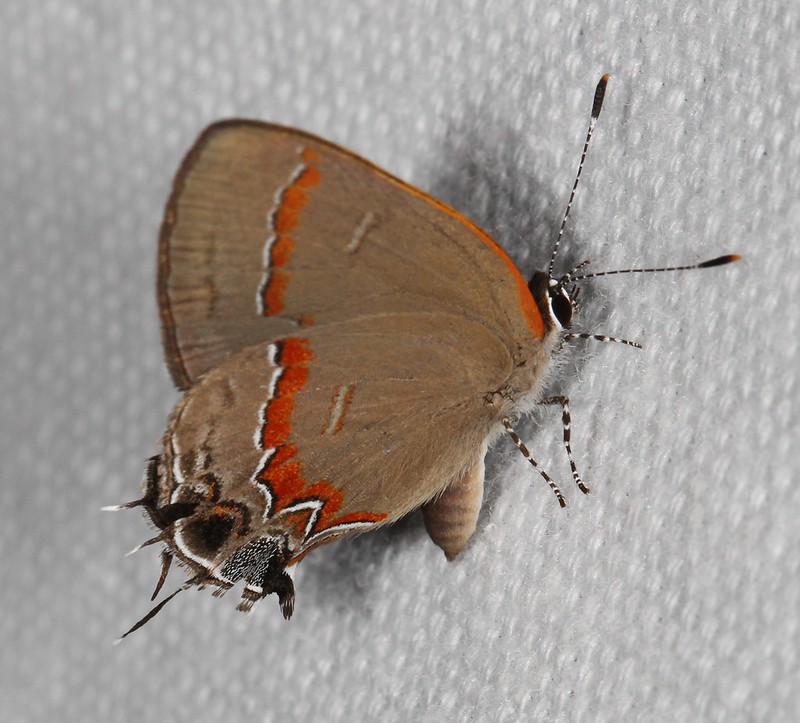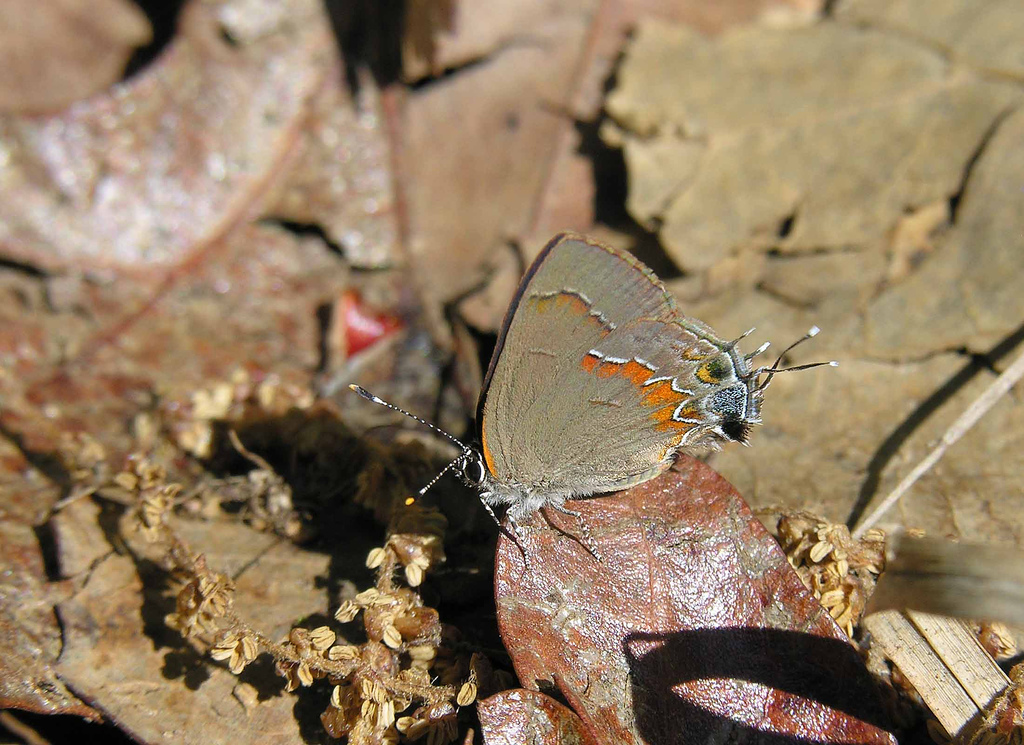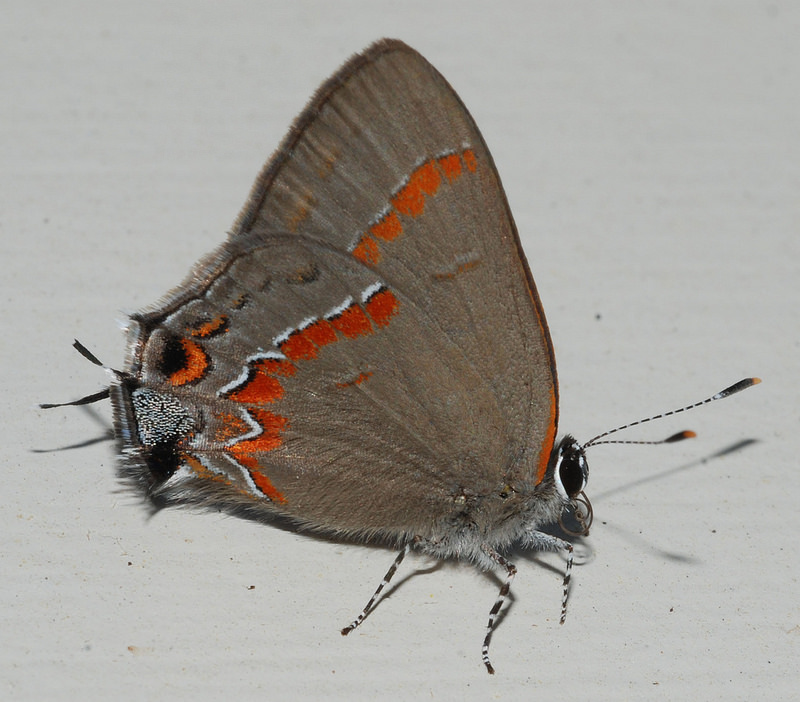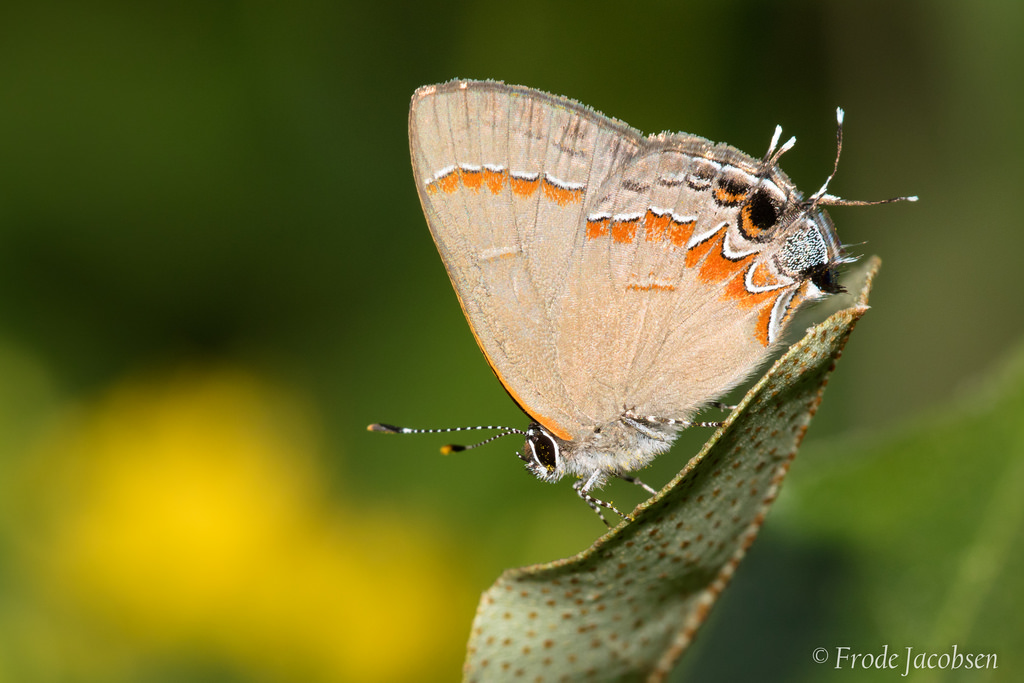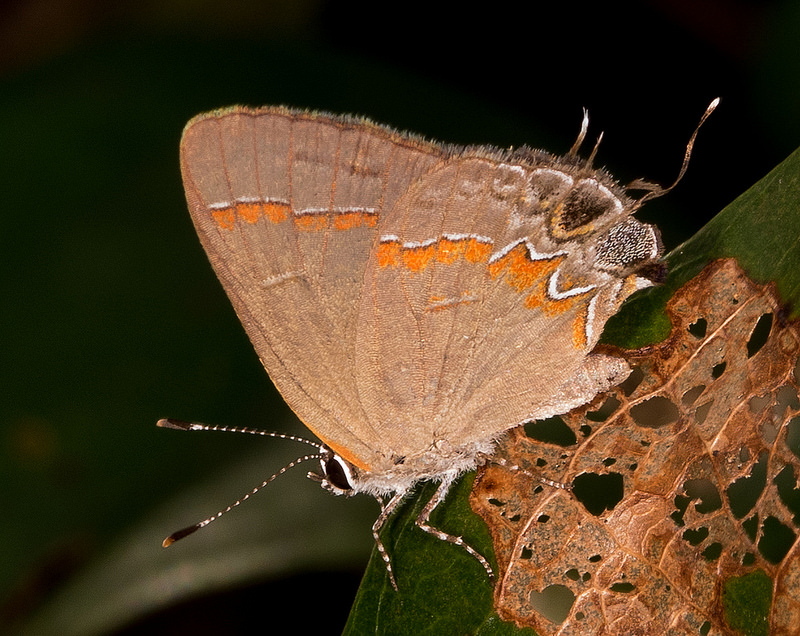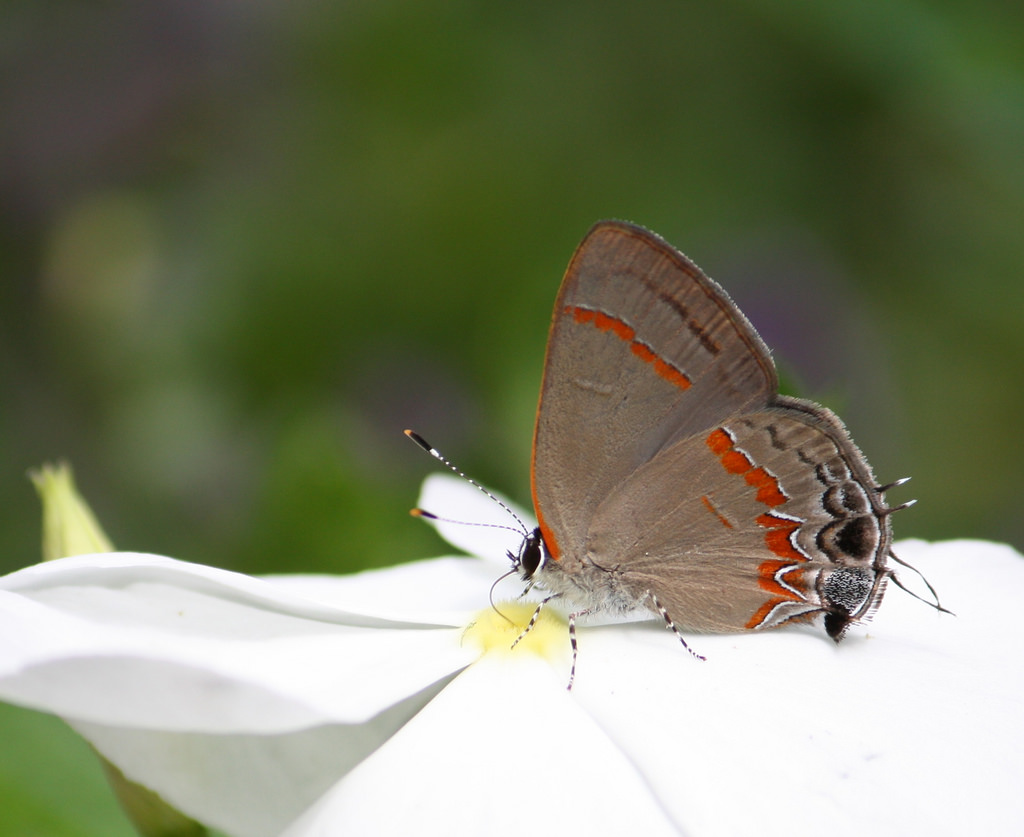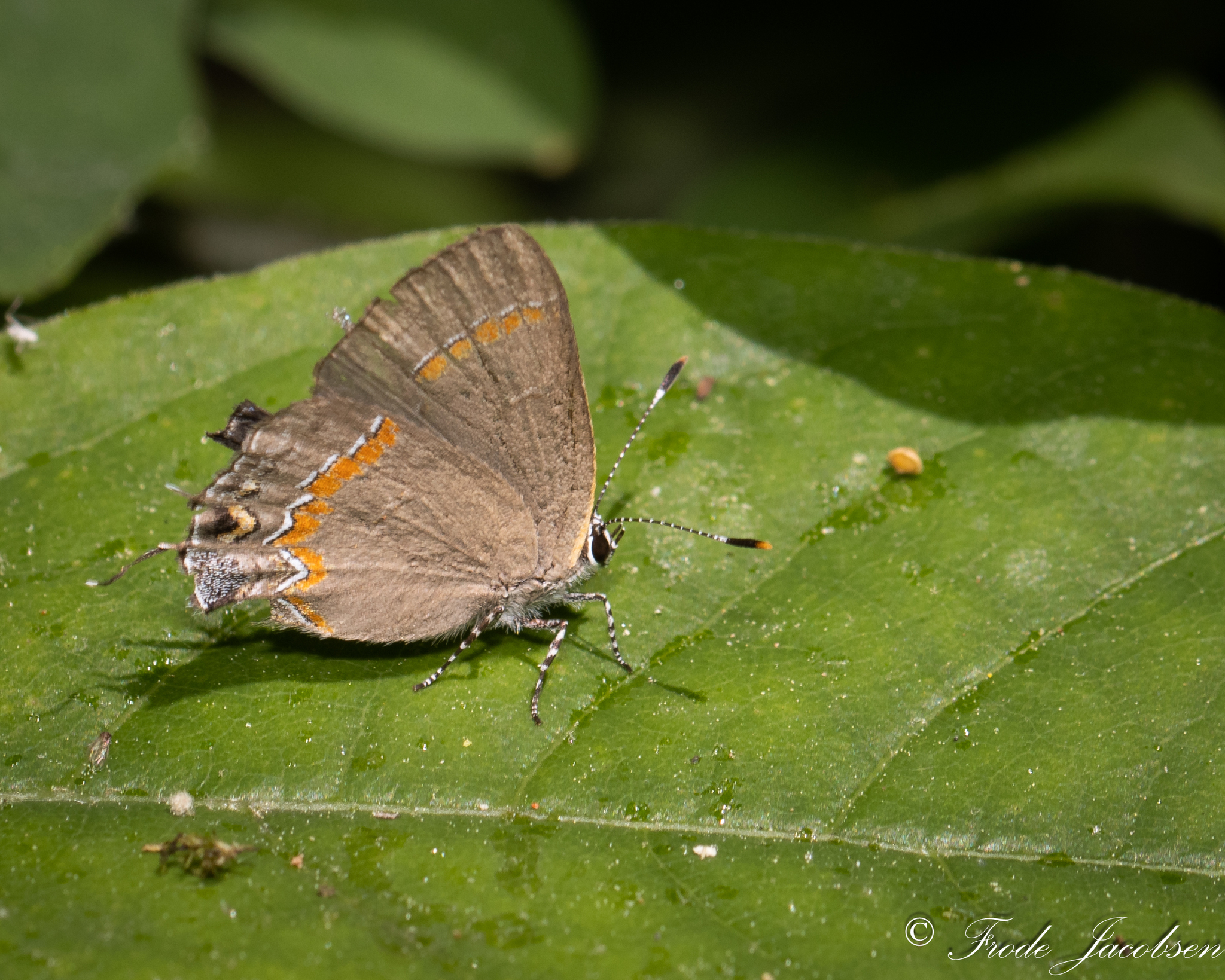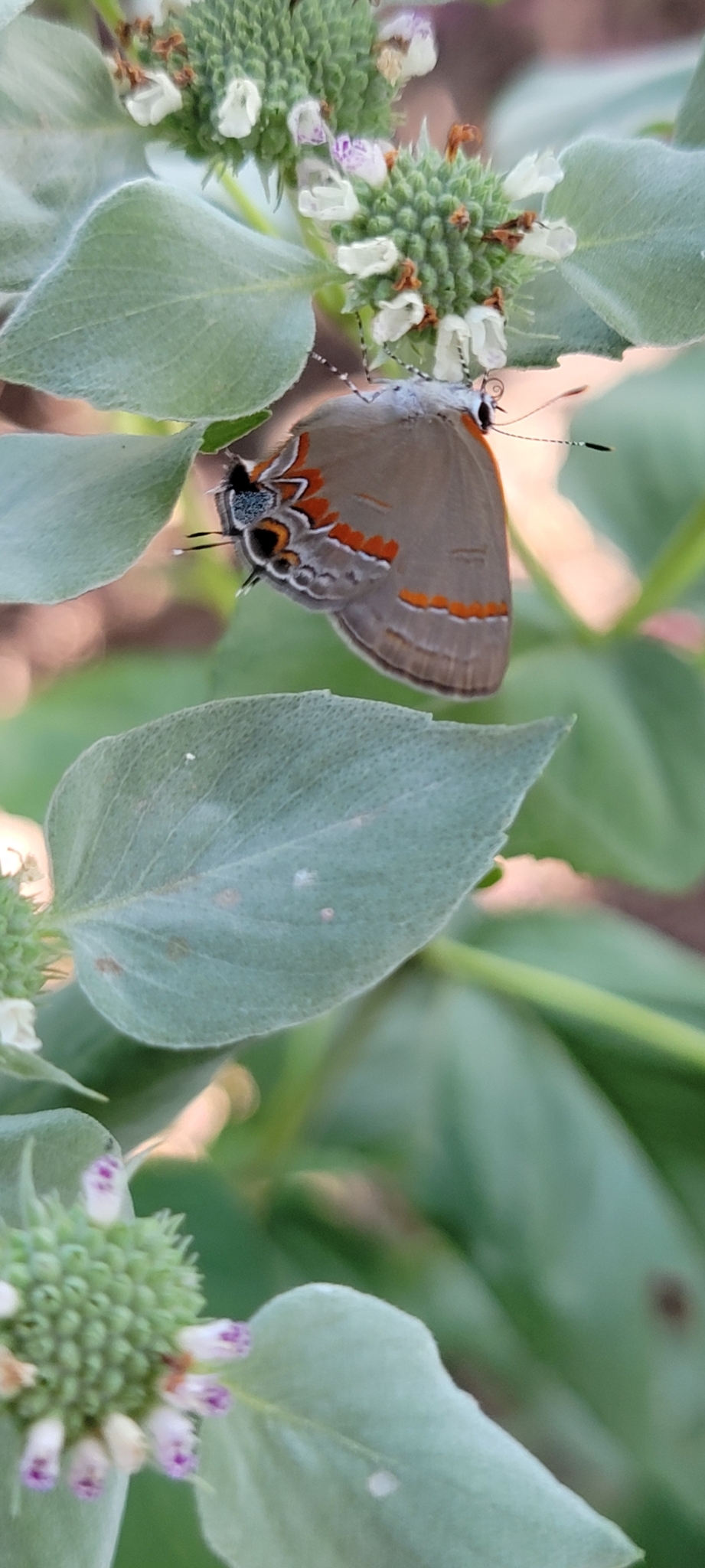Map Snapshot

























1,175 Records
Status
The Red-banded Hairstreak (Calycopis cecrops), the northernmost representative of a mostly southern or neotropical genus, is a vividly-marked and striking butterfly, with bright reddish-orange bands on its wings. This distinctive butterfly is found through most of Maryland, where it has a long flight period, starting in mid-May, with a second brood appearing in August (Butterflies of Maryland: A Biological Summary and Checklist by Lynn Davidson & Richard Smith).
Relationships
Host plants include Winged Sumac (Rhus copallinum) and Staghorn Sumac (Rhus tiphina) (Database of World's Lepidopteran Host Plants). Apparently, the larvae often show a marked preference for the rotting leaf detritus beneath the host plants.
Seasonality Snapshot
Source: Wikipedia
| Red-banded hairstreak | |
|---|---|

| |
| Scientific classification | |
| Domain: | Eukaryota |
| Kingdom: | Animalia |
| Phylum: | Arthropoda |
| Class: | Insecta |
| Order: | Lepidoptera |
| Family: | Lycaenidae |
| Genus: | Calycopis |
| Species: | C. cecrops
|
| Binomial name | |
| Calycopis cecrops Fabricius, 1793
| |

The red-banded hairstreak (Calycopis cecrops) is a butterfly native to the southeastern United States. It feeds on fallen leaves of sumac species and other trees. It is 0.9–1.25 inches (23–32 mm) in size. It lives near coastal areas.
Its genome was sequenced in 2016.[2] It has a false "head" that helps it avoid predators. In a 2012 experiment, C. cecrops was exposed to a jumping spider, Phidippus pulcherrimus, which researchers found to be a "very efficient strategy in deflecting attacks."[3]
References
[edit]- ^ "NatureServe Explorer 2.0 Calycopis cecrops Red-banded Hairstreak". explorer.natureserve.org. Retrieved 3 October 2020.
- ^ Cong, Qian; Shen, Jinhui; Borek, Dominika; Robbins, Robert K.; Otwinowski, Zbyszek; Grishin, Nick V. (28 April 2016). "Complete genomes of Hairstreak butterflies, their speciation and nucleo-mitochondrial incongruence". Scientific Reports. 6 (1): 24863. Bibcode:2016NatSR...624863C. doi:10.1038/srep24863. PMC 4848470. PMID 27120974.
- ^ Sourakov, Andrei (April 2013). "Two heads are better than one: false head allows Calycopis cecrops (Lycaenidae) to escape predation by a Jumping Spider, Phidippus pulcherrimus (Salticidae)". Journal of Natural History. 47 (15–16): 1047–1054. Bibcode:2013JNatH..47.1047S. doi:10.1080/00222933.2012.759288. S2CID 84454608.
External links
[edit]

